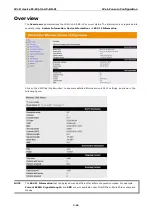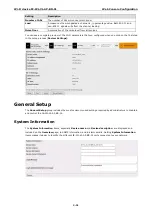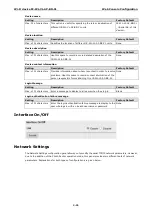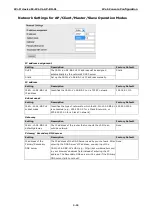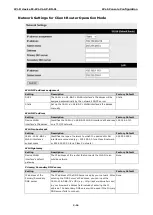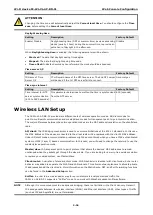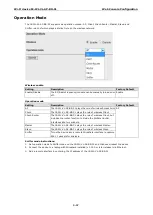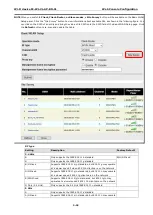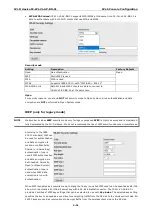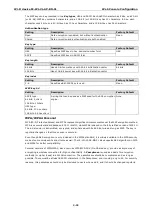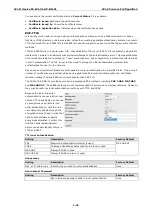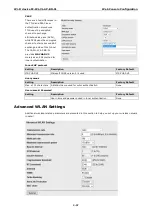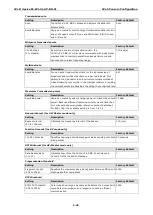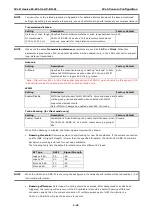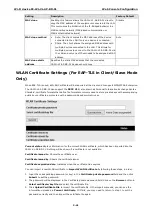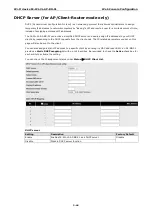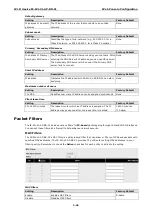
Wi-Fi device IE-WL-VL-AP-BR-CL
Web Console Configuration
3-31
•
WPA-WPA2 mixed:
IE-WL-VL-AP-BR-CL supports WPA/WPA2 at the same time. IE-WL-VL-AP-BR-CL is
able to authenticate with both Wi-Fi clients that use WPA and WPA2.
Security mode
Setting
Description
Factory Default
Open
No authentication
Open
WEP
Static WEP is used
WPA
WPA is used
WPA2
Supports IEEE 802.11i with
“
TKIP/AES + 802.1X
”
WPA-WPA2 mix
Both WPA and WPA2 clients are able to connect to
IE-WL-VL-AP-BR-CL at the same time
Open
For security reasons, you should
NOT
set security mode to Open System, since authentication and data
encryption are
NOT
performed in Open System mode.
WEP (only for legacy mode)
NOTE
Weidmüller includes
WEP
security mode only for legacy purposes.
WEP
is highly insecure and is considered
fully deprecated by the Wi-Fi alliance. We do not recommend the use of WEP security under any circumstances.
According to the IEEE
802.11 standard, WEP can
be used for authentication
and data encryption to
maintain confidentiality.
Shared (or Shared Key)
authentication type is
used if WEP authentication
and data encryption are
both needed. Normally,
Open (or Open System)
authentication type is
used when WEP data
encryption is run with
authentication.
When WEP is enabled as a security mode, the length of a key (so-called WEP seed) can be specified as 64/128
bits, which is actually a 40/104-bit secret key with a 24-bit initialization vector. The IE-WL-VL-AP-BR-CL
provides 4 entities of WEP key settings that can be selected to use with
Key index
. The selected key setting
specifies the key to be used as a
send-key
for encrypting traffic from the AP side to the wireless client side. All
4 WEP keys are used as
receive-keys
to decrypt traffic from the wireless client side to the AP side.


